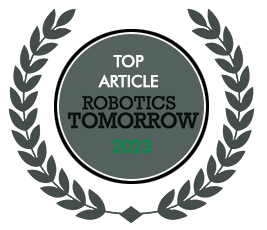With an array of LiDAR sensors available in the market, featuring different capabilities and specifications, picking the right one for a specific application can get overwhelming.
 A Guide to Selecting the Right LiDAR Sensors
A Guide to Selecting the Right LiDAR Sensors

Article from | Hokuyo
 Light Detection and Ranging (LiDAR) technology is a popular remote sensing method to measure the exact relative distance of objects on the earth's surface. The technology was conceived in the 1960s and has undergone numerous improvements.
Light Detection and Ranging (LiDAR) technology is a popular remote sensing method to measure the exact relative distance of objects on the earth's surface. The technology was conceived in the 1960s and has undergone numerous improvements.
Since its invention, LiDARs have been widely used in forestry, surveying, and mapping. But today, they have turned into a popular unit of autonomous vehicles, robot applications, mining, and infrastructural inspection.
With an array of LiDAR sensors available in the market, featuring different capabilities and specifications, picking the right one for a specific application can get overwhelming.
Read on to find out important considerations when selecting a LiDAR sensor for your application and explore the popular LiDAR classifications to make the right choice.
LiDAR Considerations for Different Applications
Short and Close Range Vs. Long-Range
Long-range LiDARs are expensive and have a range beyond 100 meters. For example, long-range LiDARs are suitable for faster-moving navigating vehicles and detecting objects within mid to long ranges.
A short-range LiDAR detects objects within 25 meters and is well-suited for slow-moving vehicles.
Close-range LiDARs can quickly identify objects in close vicinity. For instance, a close-range LiDAR can identify obstacles near a vehicle's doors.
Better results are attained when you combine a long or short-range LiDAR with a close-range one.
3D vs. 2D
2D LiDARs identify an object and give the robot or vehicle a 'something is there' idea within the range.
3D LiDARs provide a more intricate point cloud that helps to understand the object's shape, size, and depth. The difference between 2D and 3D lies in the type of information obtained from them.
Field of View (FoV)
FoV is measured independently through the horizontal and vertical axis. An autonomous vehicle or robot usually has one or more LiDARs with a 270-degree plus field of view.
Number of Channels
The number of channels determines the density and details of the point cloud. A higher number of channels will deliver a denser yet more comprehensive point cloud and vice versa. Your processing capabilities, budget, objects' size, and their relative distances determine your choice of the number of channels.
The Remission Levels
Since LiDAR technology uses light pulses, its accuracy and range depend considerably on an object's reflectivity (the amount of light being reflected back from it), also termed Remission. It is expressed in percentages. For example, white drywall would have approximately 90 percent remission, while a piece of coal would possess a remission rate of 5 percent.
Points Per Second (PPS)
Points Per Second shows the number of laser measurements taken per second. The higher the number of points, the higher the details, density, and accuracy of point clouds.
Safety Vs. Non-Safety Rated
When choosing LiDAR sensors, it is also critical to make your selection based on the sensor's safety ratings. Safety-rated sensors are necessary for applications where there is a potential risk to humans. The International Electrotechnical Commission (IEC) and The American National Standard Institute (ANSI) have issued norms and standards to regulate the safety of LiDAR sensors. The IEC61496 standard, for instance, specifies the criteria for Electro-Sensitive Protective Equipment (ESPE) construction and testing.
The ESPE levels are determined based on the risk associated with the machinery or the process used within the industry. Similarly, the Safety Integrity Level 2 (SIL2) or ISO 13849-1 is a standard used to specify the functional safety of the LiDAR sensors. For example, Hokuyo's UAM-05LP sensor is rated for personnel safety and conforms to IEC61496-1/3, Type3 IEC61508, SIL2 ISO13849-1, and PL d Category3. These sensors also have data output capabilities that can be used for obstacle detection and localization on autonomous mobile robots (AMRs) as well as automated guided vehicles (AGVs).
In processes where human interaction is less involved, you can consider non-safety-rated sensors. While these sensors have similar capabilities, they do not carry the full CAT 3, Sil2 safety standards. For example, Hokuyo's UST and UTM series LiDARs are standalone sensors that offer 2D data output for mapping, navigation, and localization and are suitable for applications that have reduced human involvement.
Picking the Right LiDAR Sensors
Depending on your application, you might not need a LiDAR sensor but a comprehensive mapping solution. It is important to understand that LiDAR can provide you with a point cloud, but for efficient deciphering, you may need time stamping, localization, and other fruitful data.
In such cases, you may want to consider comprehensive sensor technology solutions that combine LiDARs, Inertial Measurement Units (IMUs), Global Positioning Systems (GPS), software, and cameras.
At Hokuyo, we help obtain distance data for presence detection, spatial recognition, and area monitoring through our range of LiDAR sensors.
Explore our range of LiDAR sensors or contact us to get assistance in selecting the right LiDAR sensor for your autonomous robotics application.
The content & opinions in this article are the author’s and do not necessarily represent the views of RoboticsTomorrow
Comments (0)
This post does not have any comments. Be the first to leave a comment below.
Featured Product

